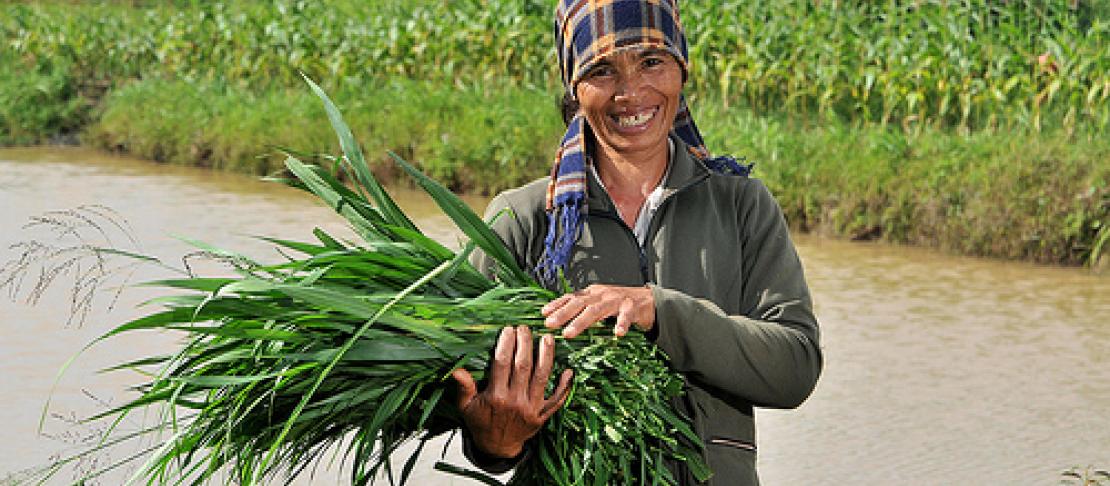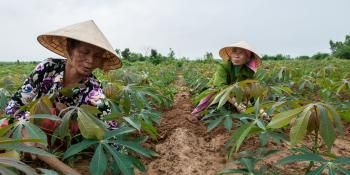Southeast Asian climate change study finds plenty of options for farmers to adapt

by Lisen Stenberg and Vanessa Meadu
There is no one size fits all solution for climate change adaptation in agriculture. Because climate change will impact agriculture differently all over the world, and have different effects on different crops and farming systems, a wide range of adaptation options are necessary.
These begin with relatively straightforward actions such as changing seed varieties and changing planting times, to adopting new methods or techniques, changing to a new crop altogether, and in extreme circumstances, ceasing to farm and moving to a new economic activity.
A new report from the World Agroforestry Centre (ICRAF) highlights opportunities and current initiatives for climate adaptation in agriculture, with a focus on Southeast Asia.
The report, "Climate Change Adaptation for Smallholder Farmers in Southeast Asia" (PDF) notes that countries in tropical areas are particularly vulnerable to the impacts of climate change. Moreover, Southeast Asia has a fast-growing population and is therefore increasingly dependent on agriculture and natural resources. The region has already been experiencing climate change induced phenomena, which enforces the need for adaptation measures.
Watch a short video showing how Colombian coffee farmers have had to abandon their plants:
A guidebook designed for development workers
The researchers surveyed existing adaptation activities for farmers in the Philippines, Vietnam, Indonesia, Cambodia and Laos. The aim of these adaptation initiatives is to help farmers respond to climate change threats such as heat waves, heavy rains and droughts.
The researchers found a wide variety of adaptation projects ranging from diversification of income and livelihoods activities to changes in cropping patterns and smarter water management systems. For example, in rain-fed rice farms in the Kandal province in Cambodia, some farmers have split their rice plots into two using different management approaches to address uncertainty in rainfall.
Half of the rice plot uses conventional wet-paddy techniques, which can survive heavy rains, and the other half uses a drought-resistant, less water-intensive cultivation technique. The practice helps increase chances of harvest, both in the event of extreme rainfall and variable water availability.
The guidebook provides a useful overview of the main issues behind climate change adaptation in agriculture, including farmers’ lack of information on “best practices” and inadequate technical support. Development workers and project implementers can use this knowledge in order to help shape decisions and initiatives in cooperation with farmers.
Comprehensive approaches to adaptation are important
“Many adaptation options are not only potential responses to climate change, but that they have impact on other parts of the farming process which are affected by conditions other than changing climate,” says Rodel Lasco, lead author of the report. “It is therefore important to take a systematic approach to the options when planning adaptation strategies. Collaborations between a range of scientists- such as economists, climatologists and agriculturists – and farmers is necessary, in order to create conditions for an adaptation process that is participatory, iterative and bottom-up” Dr. Lasco is a climate change scientist at the World Agroforestry Centre (ICRAF) based in Los Banos, the Philippines.
Household baseline survey shows marginal adaptation measures
The CGIAR Research Program on Climate Change, Agriculture and Food Security (CCAFS) recently undertook a massive baseline survey exercise that is helping us to understand the types of adaptations in farming practices that households in Africa and South Asia have already been making in order to deal with the huge demographic, economic and climate-related changes they have experienced over the last decade. Read more about the survey here.
“Similar to the findings of ICRAF's SEAsia work, we found that many households are already adapting to changing circumstances, particularly through livelihoods diversification and changes in cropping patterns, but their changes tend to be marginal rather than transformational in nature, with relatively little uptake of existing improved soil, water and land management practices” says Patti Kristjanson, CCAFS Theme Leader on Linking Knowledge with Action, who helped coordinate the survey. The evidence also suggests that the least food secure households have been making very few agricultural management adaptations and thus merit serious attention.
The lessons gleaned from Southeast Asia, as well as from the CCAFS baseline surveys will provide useful insights for developing and testing adaptation options in East and West Africa and South Asia
Download the full report:
Climate Change Adaptation for Smallholder Farmers in Southeast Asia (PDF) by Rodel D. Lasco, Christine Marie D. Habito, Rafaela Jane P. Delfino, Florencia B. Pulhin and Rogelio N. Concepcion.
Lisen Stenberg is an intern with the CGIAR Research Program on Climate Change, Agriculture and Food Security (CCAFS). Vanessa Meadu manages CCAFS Communications.


